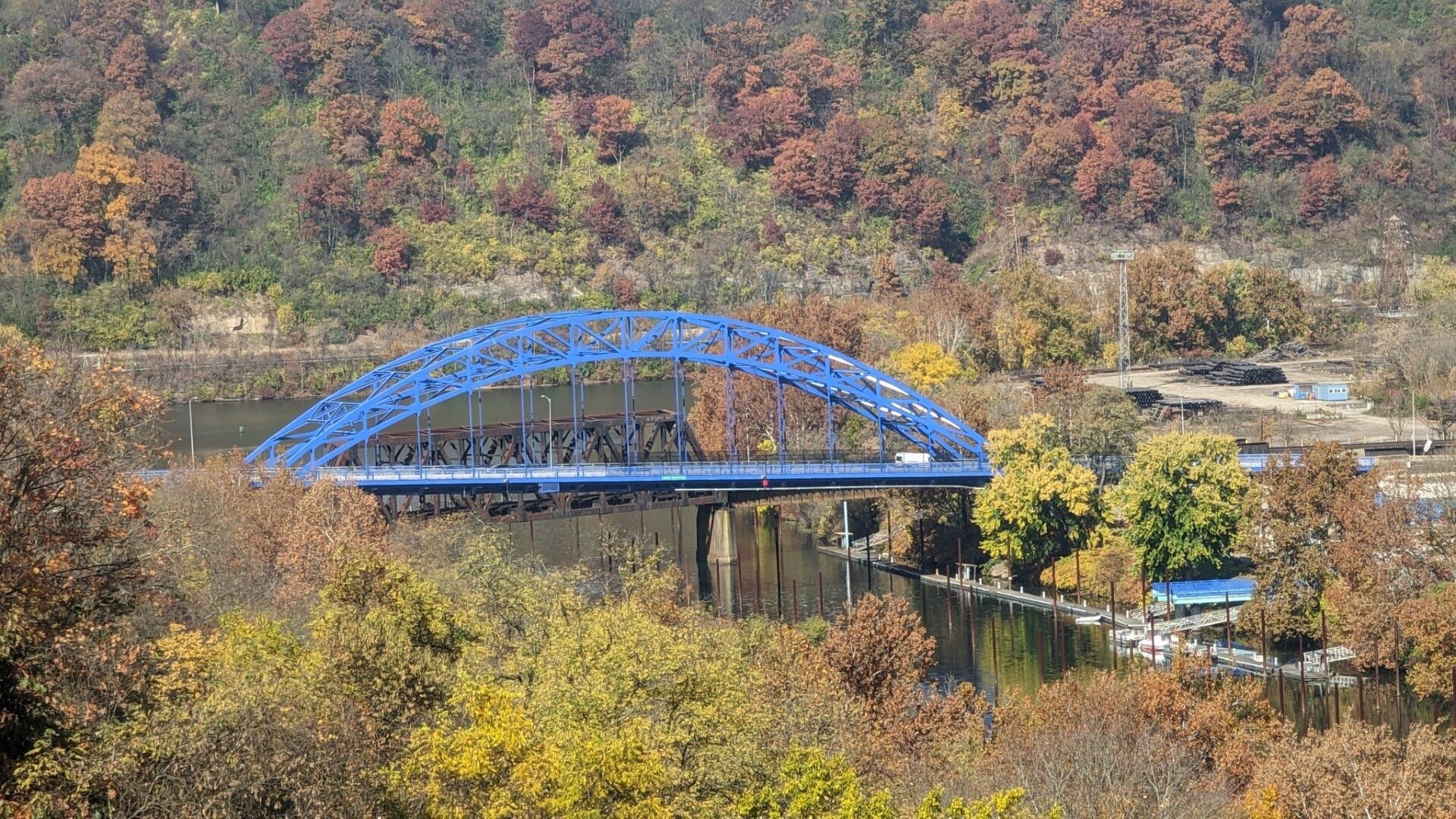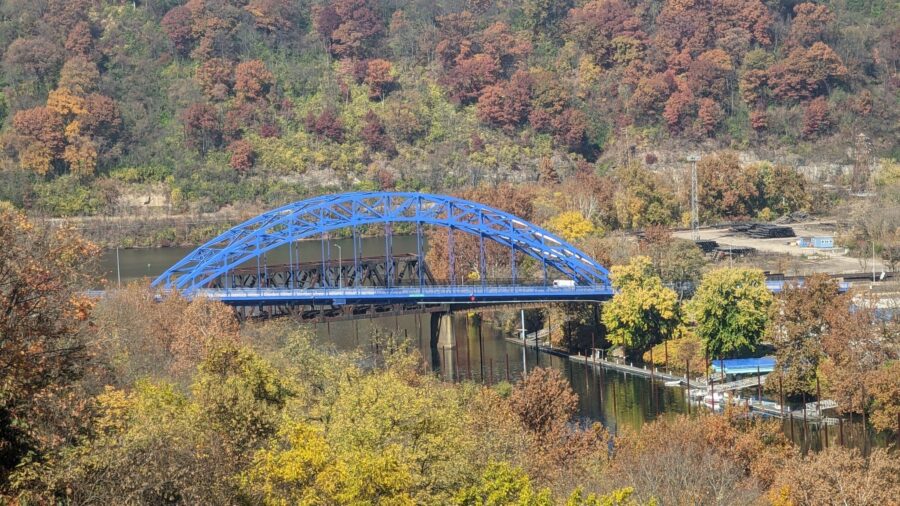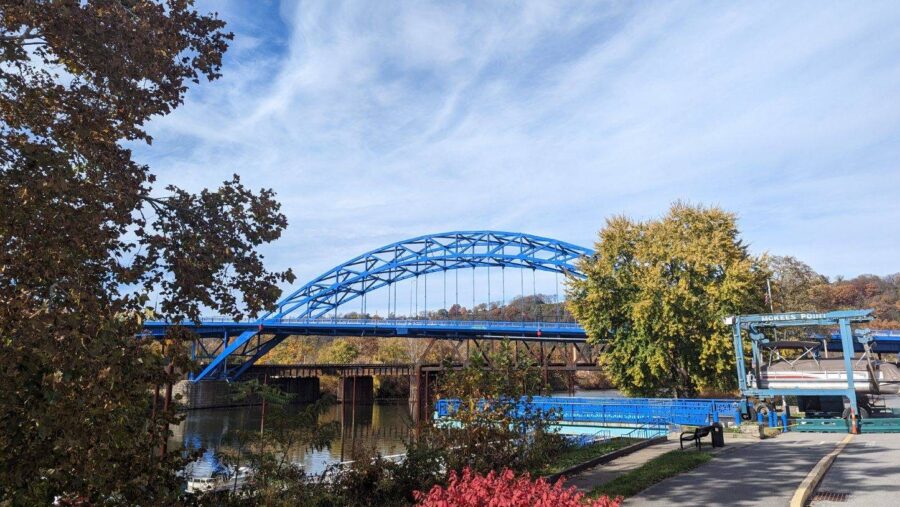
Location McKeesport, PA
Client Pennsylvania Department of Transportation
Services Construction Management, Project Management
Project Value $15.44 million
Hill provided construction inspection services to the Pennsylvania Department of Transportation (PennDOT) for the rehabilitation of the Jerome Street Bridge over the Youghiogheny River in McKeesport, PA. The 720 foot, tied-arch bridge originally opened in 1937 and now stands as a designated Historic Landmark. An important gateway to McKeesport, the bridge carries approximately 13,000 vehicles per day over four lanes of traffic. Due to grid deck deterioration and the frequent need for repairs, PennDOT undertook a project to rehabilitate the bridge.
The $15.44 million rehabilitation included a new concrete deck and sidewalk, barrier repairs, full painting, structural steel repairs, concrete substructure repairs, bearing replacement, and new expansion dams. The original bridge had no shoulders and rainwater often collected in traffic lanes, reducing bridge capacity. So, the project also incorporated 13 new scuppers and 2 inlets to facilitate drainage. Notably, the project team implemented lightweight concrete with a polyester polymer concrete overlay for the bridge deck. One of the largest applications of polyester polymer concrete overlay in the state, this solution helps prevent bridge overload and reduces long-term bridge maintenance costs. Due to its creative design solutions, the project was recognized with a 2024 Engineers’ Society of Western Pennsylvania (ESWP) Award of Distinction. The project began in the summer of 2020 and concluded in March 2023.
Hill’s responsibilities included conducting inspections to reduce the need for rework and promote timely payments; coordinating with PennDOT, local officials, emergency medical and fire services, and Pittsburgh Regional Transit to manage stakeholder requirements, support efficient communications, and promote safe conditions on site; and coordinating with CSX Transportation to provide flagging during work over railroad property. In addition, PennDOT’s Inspector-In-Charge was promoted during the rehabilitation, leaving a vacancy on the project. At PennDOT’s request, Hill quickly identified a qualified professional to fill the position, allowing work to continue without disruption.
We and use cookies and other tracking technologies to improve your experience on our website. We may store and/or access information on a device and process personal data, such as your IP address and browsing data, for personalised advertising and content, advertising and content measurement, audience research and services development. Additionally, we may utilize precise geolocation data and identification through device scanning.
Please note that your consent will be valid across all our subdomains. You can change or withdraw your consent at any time by clicking the “Consent Preferences” button at the bottom of your screen. We respect your choices and are committed to providing you with a transparent and secure browsing experience.
| Cookie | Duration | Description |
|---|---|---|
| cookielawinfo-checbox-analytics | 11 months | This cookie is set by GDPR Cookie Consent plugin. The cookie is used to store the user consent for the cookies in the category "Analytics". |
| cookielawinfo-checbox-functional | 11 months | The cookie is set by GDPR cookie consent to record the user consent for the cookies in the category "Functional". |
| cookielawinfo-checbox-others | 11 months | This cookie is set by GDPR Cookie Consent plugin. The cookie is used to store the user consent for the cookies in the category "Other. |
| cookielawinfo-checkbox-necessary | 11 months | This cookie is set by GDPR Cookie Consent plugin. The cookies is used to store the user consent for the cookies in the category "Necessary". |
| cookielawinfo-checkbox-performance | 11 months | This cookie is set by GDPR Cookie Consent plugin. The cookie is used to store the user consent for the cookies in the category "Performance". |
| viewed_cookie_policy | 11 months | The cookie is set by the GDPR Cookie Consent plugin and is used to store whether or not user has consented to the use of cookies. It does not store any personal data. |


